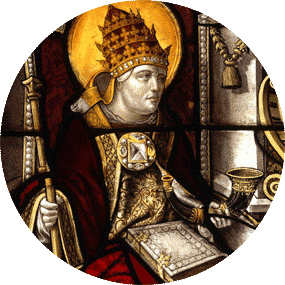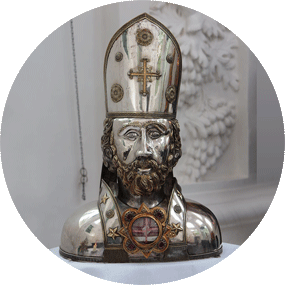16 September
Memorial of Sts. Cornelius and Cyprian
Today the Church commemorates two friends in the service of Christ and his Church. Cornelius, a Roman, was the twenty-first Pope during the reign of the Emperor Gallus and Volusian. He had to oppose Novatian, the first anti-pope, who believed that apostates who repented could not be forgiven. Helped by St. Cyprian, Cornelius confirmed his papal authority. He was beheaded in exile at Civitavecchia, Italy in 253. Saints Cyprian and Cornelius are mentioned in the Roman Canon (Eucharistic Prayer I) of the Mass.
COLLECT PRAYER
God our Father, in Saints Cornelius and Cyprian you have given your people an inspiring example of dedication to the pastoral ministry and constant witness to Christ in their suffering. May their prayers and faith give us courage to work for the unity of your Church. Grant this through our Lord Jesus Christ, your Son, who lives and reigns with you and the Holy Spirit, God, for ever and ever. Amen.

16 September
Memorial
St Cornelius
Pope and Martyr
Born: Rome, Italy
Died: June 253 AD, Civitavecchia, Italy
Papacy began: 6 or 13 March 251
Papacy ended: June 253
Successor: Pope Lucius I
Predecessor: Pope Fabian
Patron: against ear ache; against epilepsy; fever; cattle; domestic animals.
St Cornelius
Pope Cornelius (251-253) was the successor to Pope Fabian. During his reign a controversy arose concerning the manner of reinstating those who had fallen from the faith under the duress of persecution. The Novatians accused the Pope of too great indulgence and separated themselves from the Church. With the help of St. Lucina, Cornelius transferred the remains of the princes of the apostles to places of greater honor. On account of his successful preaching the pagans banished him to Centumcellae, where he died. St. Cyprian sent him a letter of condolence. At the time of Pope Cornelius there were at Rome forty-six priests, seven deacons, seven subdeacons, forty-two acolytes, fifty-two clerics and more than five hundred widows who were supported by the Church (according to Cornelius’ letter to Bishop Fabian of Antioch).
Excerpted from The Church’s Year of Grace, Pius Parsch
Symbols: horn and triple papal cross; cows or oxen; font; tall cross; sword; also papal symbols of tiara, church and/or triple cross; martyr’s crown; palm frond (for martytr); papal tiara.
Source: CATHOLIC CULTURE

16 September
Memorial
St Cyprian
Bishop and Martyr
Born: Carthage, Tunisia
Died: 14 September 258 AD, Carthage, Tunisia
Patron: Algeria; North Africa.
Things to Do:
- Read St. Cyprian’s encouraging words to the martyrs of his day, learn more about Roman persecutions, catacombs, apostates, Novatian and Novatus.
- Study the Sacrament of Penance.
St Cyprian
Thascius Caecilius Cyprianus, illustrious as a pagan rhetorician in Carthage, embraced the true faith in the year 246 and was soon thereafter consecrated priest and bishop of that city (248). He was an energetic shepherd of souls and a prolific writer. He defended the unity of the Church against schismatic movements in Africa and Italy, and greatly influenced the shaping of Church discipline relative to reinstating Christians who had apostatized. He fled during the Decian persecution but guided the Church by means of letters. During the Valerian persecution (258) he was beheaded. He suffered martyrdom in the presence of his flock, after giving the executioner twenty-five pieces of gold. St. Jerome says of him: “It is superfluous to speak of his greatness, for his works are more luminous than the sun.” Cyprian ranks as an important Church Father, one whose writings are universally respected and often read in the Divine Office. His principal works are: On the Unity of the Church; On Apostates; a collection of Letters; The Lord’s Prayer; On the Value of Patience.
Excerpted from The Church’s Year of Grace, Pius Parsch
Symbols: twenty gold coins; crown; axe; palm frond (for martytr); martyr’s crown; bishop’s mitre.
Source: CATHOLIC CULTURE